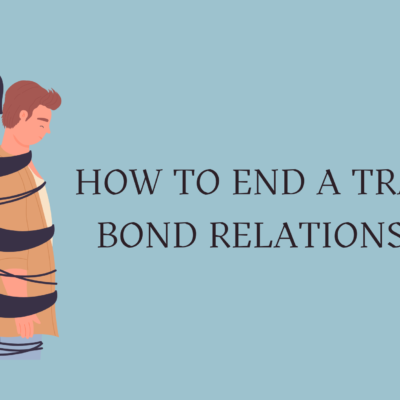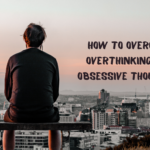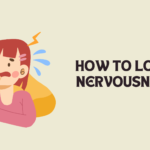How to End a Trauma Bond Relationship: Breaking free from a trauma bond relationship can be one of the most challenging yet empowering journeys a person can undertake. Trauma bonding occurs when an individual forms a deep emotional attachment to someone who causes them harm, often due to cycles of abuse and intermittent reinforcement of affection. The emotional grip of such relationships can make leaving incredibly difficult, but it is possible. This article explores the steps to end a trauma bond relationship and reclaim personal freedom and well-being.
Also Read:
- How to Get over Someone that You See Everyday?
- How do You Forgive Someone who Continues to Hurt You?
- How to Heal after Breaking up With Someone You Love?
Understanding Trauma Bonding
Trauma bonding is a psychological response that occurs in abusive relationships, where the victim feels a strong emotional connection to their abuser despite the pain they endure. This bond forms due to:
- Intermittent Reinforcement: Periods of kindness and affection followed by abuse create confusion and dependency.
- Fear and Control: The abuser may manipulate the victim through fear, threats, or guilt.
- Low Self-Esteem: Continuous emotional manipulation can erode self-worth, making it harder to leave.
- Hope for Change: Victims often believe that the abuser will change, prolonging the toxic cycle.
Recognizing these factors is the first step toward breaking free.
Steps to End a Trauma Bond Relationship
1. Acknowledge the Reality of the Relationship
Denial is a powerful force in trauma bonds. Many victims minimize their experiences, blame themselves, or rationalize their abuser’s behavior. Accepting that the relationship is toxic and harmful is crucial. Keep a journal to document incidents of abuse, manipulation, and emotional distress. Reading back on these experiences can provide clarity and reinforce the need to leave.
2. Educate Yourself on Trauma Bonds
Understanding the psychological mechanisms behind trauma bonding helps dismantle its power. Research books, articles, and videos on the subject. Knowledge is a powerful tool that can validate your experiences and empower you to take action.
3. Create a Safety Plan
Leaving a trauma bond relationship, especially if it involves physical or emotional abuse, requires careful planning. Consider the following:
- Financial Independence: If possible, set aside emergency funds.
- Safe Space: Identify a safe place to stay if needed.
- Support System: Inform trusted friends or family members about your situation.
- Legal Protection: If necessary, seek legal advice regarding restraining orders or custody matters.
4. Establish No Contact (or Limited Contact if Necessary)
Cutting off contact with the abuser is crucial for breaking free. This includes:
- Blocking their phone number and social media.
- Avoiding places where they might be.
- Ignoring attempts to reconnect.
- If children or shared responsibilities are involved, keep interactions minimal and strictly necessary.
5. Seek Professional Support
Therapists, counselors, and support groups can offer invaluable guidance and emotional support. A trauma-informed therapist can help address the deep-rooted effects of the relationship and assist in healing from the emotional wounds.
6. Build a Strong Support System
Surrounding yourself with supportive and understanding individuals is vital. Friends, family, or online support groups can provide encouragement and remind you of your worth. Isolation fuels trauma bonds, so staying connected is essential.
7. Work on Self-Healing and Self-Love
Recovering from a trauma bond relationship requires inner work. Some ways to heal include:
- Practicing Self-Care: Engage in activities that bring joy and relaxation.
- Rebuilding Self-Esteem: Challenge negative self-beliefs instilled by the abuser.
- Setting Healthy Boundaries: Learn to say no and prioritize your well-being in future relationships.
- Engaging in Therapy or Coaching: Professional guidance can facilitate the healing process.
8. Recognize and Manage Withdrawal Symptoms
Leaving a trauma bond relationship can trigger withdrawal symptoms similar to addiction. Feelings of sadness, loneliness, or longing for the abuser are normal. During this phase:
- Remind yourself why you left.
- Engage in activities that distract and uplift you.
- Seek emotional support when needed.
- Avoid romanticizing the past.
9. Develop a New Identity and Life Goals
Breaking free is not just about leaving the relationship but also about creating a new, fulfilling life. Consider:
- Exploring new hobbies and interests.
- Setting career or personal development goals.
- Strengthening friendships and relationships with supportive people.
- Rediscovering personal values and passions.
Conclusion
Ending a trauma bond relationship is not easy, but it is necessary for reclaiming your happiness and self-worth. The journey may be painful, but with the right support, self-awareness, and determination, you can break free and build a healthier, more fulfilling life. Healing takes time, so be patient and compassionate with yourself. You deserve love, respect, and a life free from toxic cycles.








